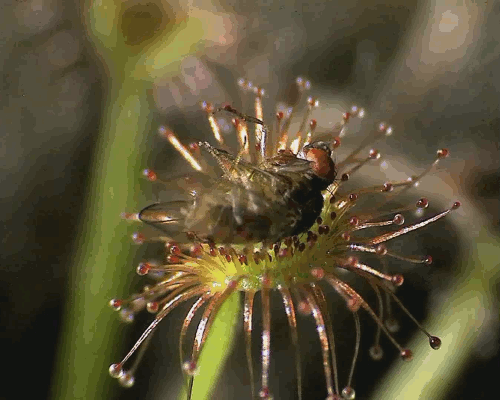Text
Flat Top Acacia Tree

Hi classmates! Welcome to my final Blog Post! Today I will be talking to y’all about the Nyanga Flat-Top Acacia Tree, or “Acacia Abyssinica” (Flora of Zimbabwe).
Taxonomic Classification : (according to ITIS Report)
Kingdom : Plantae
Class : Magnoliopsida
Order : Fabales
Family : Fabaceae
Nutritional Requirement :
- “Soil Range:Sand to Loam” (Backyard Gardener).
- “Water Range:Semi-Arid to Normal” (Backyard Gardener).
Growth & Development ;
- They are usually “20-50′+ tall” (the spruce).
Behavior :
- They have “Thorns in straight pairs at nodes” (Flora of Zimbabwe).
Reproduction :
- They flower from “Oct - Dec” (Flora of Zimbabwe).
Evolutionary Origins :
- They are native to “Eastern Africa” (the spruce).
Habitat :
- They live in “woodland and montane grassland” (Flora of Zimbabwe).
Thanks for reading! I hope you have enjoyed all of my blogs from this school year! :-)
REFERENCES :
https://www.britannica.com/plant/acacia
https://www.zimbabweflora.co.zw/speciesdata/species.php?species_id=125750
https://www.itis.gov/servlet/SingleRpt/SingleRpt?search_topic=TSN&search_value=820293#null
https://www.backyardgardener.com/plantname/acacia-abyssinica-abyssinica-acacia/
https://www.thespruce.com/twenty-species-acacia-trees-and-shrubs-3269672
https://www.britannica.com/plant/acacia
5 notes
·
View notes
Text
Tropical Pitcher Plants

Blog Post 30 :
Hi classmates! Welcome to my 30th Blog Post. Today I will be telling you about the tropical pitcher plant, or “Nepenthes spectabilis x ventricose” (eden project).
Taxonomic Classification : (according to eden project)
Family : Nepenthaceae
Nutritional Requirement :
- Their diet includes “just about anything that can fit into its pouch of sticky sap, including lizards, termites, spiders, and worms” (Owlcation).
Growth & Development :
- They grow up to “15m tall” (eden project).
- Their pitchers are “up to 35cm long” (eden project).
Behavior :
- They have “complex relationships with their ecosystems” (Owlcation).
Reproduction :
- They reproduce “by means of sexual reproduction” (Gardenerdy).
Evolutionary Origins :
- They mostly come from “the forests of Sumatra, Borneo, and the Philippines” (Owlcation).
Habitat :
- They require “a minimum temperature of 8.5°C in the winter and a maximum of 21°C in the summer, and ample moisture and high humidity throughout” (eden project).
REFERENCES :
https://owlcation.com/stem/10-Most-Wacky-Plants-of-the-World
http://www.edenproject.com/learn/for-everyone/plant-profiles/highland-tropical-pitcher-plant
https://gardenerdy.com/pitcher-plant-facts
2 notes
·
View notes
Text
Japanese wisteria

Blog Post 29 :
Hi classmates! Welcome to my 29th Blog Post. Today I will be telling y’all about the Japanese wisteria tree, or “Wisteria floribunda” (Missouri Botanical Garden).
Taxonomic Classification : (according to USDA)
Family : Fabaceae
Group : Dicot
Nutritional Requirement :
- They thrive “in full sun or part shade, in moderately fertile, medium moisture, well-drained soils” (Gardenia).
Growth & Development :
- They can “grow vigorously up to 20-30 ft. tall” (Gardenia).
Behavior :
- There “Flowers give way to pendant, velvety, bean-like seed pods (to 6” long) which ripen in autumn and may persist into winter” (Missouri Botanical Garden).
Reproduction :
- They reproduce asexually.
Evolutionary Origins :
- I could not find any specific origin, besides Japan, of course. :-)
Habitat :
- They are “native to Japan” (Encyclopædia Britannica).
Thanks for reading !!!
REFERENCES :
http://www.missouribotanicalgarden.org/PlantFinder/PlantFinderDetails.aspx?kempercode=g320
https://plants.usda.gov/core/profile?symbol=wifl
http://www.missouribotanicalgarden.org/PlantFinder/PlantFinderDetails.aspx?kempercode=g320
https://www.britannica.com/plant/Wisteria
1 note
·
View note
Text
Silver Torch Cactus

Blog Post 28 :
Hi fellow students! Welcome to my 28th Blog Post. Today, I will be telling y’all about the Silver Torch Cactus, or “Cleistocactus strausii” (Owlcation).
Taxonomic Classification : (according to Plants Rescue)
Family : Cactaceae
Nutritional Requirement :
- Water them “moderately, enough to make the potting mixture moist” (Plants Rescue).
Growth & Development :
- They grow “quickly during the summer with supplemental irrigation, but is generally drought-resistant” (horticulture unlimited inc.).
Behavior :
- I did not find anything regarding their behavior.
Reproduction :
- They reproduce asexually.
Evolutionary Origins :
- They are “native to high mountain regions of Bolivia and Argentina” (Plants Rescue).
Habitat :
- They prefer “free draining soils, strong sunlight, but not high temperatures” (Plants Rescue).
thanks for reading :-)
______________________________________________________________________
REFERENCES :
https://owlcation.com/stem/10-Most-Wacky-Plants-of-the-World
http://www.plantsrescue.com/tag/silver-torch-cactus/
https://www.horticultureunlimited.com/plant-guide/silver-torch-cactus/
1 note
·
View note
Text
Hammar Orchid

Blog Post 27 :
Hi classmates! Welcome to my 27th Blog Post of the school year. Today, I will be telling you about the King-in-his-carriage, or “Drakaea glyptodon” (Owlcation).
Taxonomic Classification : (according to OzNativePlants)
Kingdom : Plantae
Class : Liliopsida
Order : Asparagales
Family : Orchidaceae
Nutritional Requirement :
- I did not see much about how frequent to water them.
Growth & Development :
- They grow up to “35cm” (OzNativePlants).
Behavior :
- They smell “like raw meat” (Owlcation).
Reproduction :
- They reproduce asexually.
Evolutionary Origins : - They are from “Western Australia” (OzNativePlants).
Habitat :
- They are “found in damp sandy soil on coastal plains and swamp margins” (OzNativePlants).
______________________________________________________________________
REFERENCES :
http://eol.org/pages/1111935/overview
https://owlcation.com/stem/10-Most-Wacky-Plants-of-the-World
http://www.oznativeplants.com/plantdetail/Hammer-Orchid/Drakaea/glyptodon/zz.html
2 notes
·
View notes
Text
Catmint

Blog Post 26 :
Hello classmates! Welcome to my 26th Blog Post. Today, I will be sharing with y’all the catmint, or “Nepeta racemosa” (Missouri Botanical Garden).
[ This blog is from last week when my Tumblr would not load up, but better late than never! ]
Taxonomic Classification : (according to Missouri Botanical Garden).
Kingdom : Plantae
Family : Lamiaceae
Nutritional Requirement :
It “thrives in dry soils and is very tolerant of drought” (Missouri Botanical Garden).
Growth & Development :
They “bloom in spring.” But, the bloom “may continue throughout summer into early fall under proper growing conditions” (Missouri Botanical Gardens).
Behavior :
The leaves are “highly aromatic when crushed or bruised” (Missouri Botanical Garden).
Reproduction :
They reproduce asexually.
Evolutionary Origins :
They are “Native to the Caucasus and northern Iran” (Missouri Botanical Garden).
Habitat :
Catmint is “Easily grown in average, dry to medium, well-drained soils in full sun to part shade” (Missouri Botanical Garden).
_______________________________________________________________________
Thanks for reading!
REFERENCES :
http://www.missouribotanicalgarden.org/PlantFinder/PlantFinderDetails.aspx?kempercode=t160
1 note
·
View note
Text
Wax Plant

Blog Post 25 :
Hi classmates! Welcome to my 25th blog post. Today I will be telling y’all about the Wax plant, or “Hoya carnosa” (World of Succulents).
Taxonomic Classification : (according to World of Succulents)
Family : Apocynaceae
Nutritional Requirement :
- They like “well-drained soil and the warm, humid conditions that many tropical flowers crave” (the spruce).
Growth & Development :
- These flowers “grow in a ball-shaped cluster”. “Each cluster may contain up to 40 individual flowers” (the spruce).
Behavior :
- On this plant, “the leaves are smooth, thick and fleshy” (World of Succulents.
Reproduction :
- asexual reproduction
Evolutionary Origins :
- They are "Native to Eastern Asia and Australia” (World of Succulents).
Habitat :
- They are “typically grown as a houseplant” (Missouri Botanical Garden).
Thanks for reading!!!

REFERENCES :
https://www.thespruce.com/hoya-plants-1315763
https://worldofsucculents.com/hoya-carnosa-wax-plant/
http://www.missouribotanicalgarden.org/PlantFinder/PlantFinderDetails.aspx?kempercode=b537
1 note
·
View note
Text
Japanese Sweetspire

Blog Post 24 :
Hi folks! Welcome back to my blog. Today I will be telling y'all about the Japanese Sweetspire, or “Itea japonica” (Dave’s Garden).
Taxonomic Classification : (according to Missouri Botanical Garden)
Family : Iteaceae
Nutritional Requirement :
- photosynthesis
Growth & Development :
- “Grows 12" per year” (plantlust).
Behavior :
- They are “are known for great purple to red Fall color but 'Beppu' has exceptional reddish-purple fall foliage which persists into winter” (plantlust).
Reproduction :
- asexual reproduction
Evolutionary Origins :
- could not find an exact location, but pretty positive it is somewhere in Japan haha
Habitat :
- could not find :-/
thanks for reading !!!

REFERENCES :
https://farmyardnurseries.co.uk/shop/shrub/itea-virginica-henrys-garnet/
http://www.missouribotanicalgarden.org/PlantFinder/PlantFinderDetails.aspx?kempercode=e264
https://plantlust.com/plants/21263/itea-japonica-beppu/
1 note
·
View note
Text
Cape Sundews

Blog Post 23 :
Hi fellow classmates! Welcome back to my blog. This week, I am telling you all about the cape sundew, or “Drosera capensis” (Plantz Africa).
Taxonomic Classification : (according to USDA).
Kingdom : Plantae
Class : Magnoliopsida
Order : Nepenthales
Nutritional Requirement :
- They have the “ability to digest the nutrients, especially the nitrogen it requires from insects caught in its stalked tentacles” (Plantz Africa).
Growth & Development :
- They are of “varying height, but usually around 150 mm” (Plantz Africa).
Behavior :
- They “are large and handsome plants that are very easy to grow” (California Carnivores).
Reproduction :
- They “produce scores of showy pink flowers on tall stems and are easy to propagate” (California Carnivores).
Evolutionary Origins :
- They are from the “cape of South Africa” (California Carnivores).
Habitat :
- The cape sundew “occurs naturally in the southwestern Cape and can be found in marshes, along streams, permanent seeps or damp areas of fynbos” (Plantz Africa).
See y'all next week!

REFERENCES :
https://www.britannica.com/plant/sundew#ref1231800
http://pza.sanbi.org/drosera-capensis
https://plants.usda.gov/java/ClassificationServlet?source=display&classid=DROSE
https://www.californiacarnivores.com/collections/cape-sundews
2 notes
·
View notes
Text
Giant Water Lilly

Blog Post 22 :
Hi classmates! Today I am going to be telling y'all about Gigantic Water Lillies, or Victoria amazonica, (Kew Science).
Taxonomic Classification : (according to Tree of Life)
Kingdom : Plantae
Phylum : Magnoliophyta
Class : Magnoliopsida
Order : Nymphaeales
Family : Nymphaeaceae
Nutritional Requirement :
- I could not find what they eat :-/
Growth & Development :
- “The flower is white the first evening it opens, attracting beetles with a sweet pineapple-like scent and with heat from a thermochemical reaction” (Kew Science).
- “The leaves can grow up to 46 centimeters in size” (Tree of Life).
Behavior :
- “The colour of the lily changes however when it is pollinated to a pinky purple” (Tree of Life).
Reproduction :
- They reproduce asexually.
Evolutionary Origins :
- They are “Native to tropical South America” (Kew Science).
Habitat :
- “The Giant Water Lily grows in the shallow waters of the Amazon River basin, as well as bayous and specific lakes in Brazil” (Tree of Life).
Peace out from my friend Chrissy!

REFERENCES :
http://powo.science.kew.org/taxon/urn:lsid:ipni.org:names:605776-1
http://tolweb.org/treehouses/?treehouse_id=4851
5 notes
·
View notes
Text
White Egret Flower

Blog Post 21 :
Hi friends!!! For my 21st blog post, I will be telling y'all about the White Egret Flower, or “Habenaria radiata” (White Flower Farm).
Taxonomic Classification : (according to Seeds of Eaden)
Order : Asparagales
Family : Orchidaceae
Nutritional Requirement :
- “Grow in full sun to partial shade. If there is insufficient rainfall, water to keep plants evenly moist, but not wet” (White Flower Farm).
Growth & Development :
- They produce “white flowers on flower spikes that are generally 5-9 inches long, occasionally longer” (White Flower Farm).
Behavior :
- They are “slow to emerge in spring” (White Flower Farm).
Reproduction :
- They reproduce asexually.
Evolutionary Origins :
- They are “native to Asia” (White Flower Farm).
Habitat :
- They are found on “grassy wetlands and seepage slopes throughout Japan, the Korean Peninsula, and some parts of eastern China” (Botany Boy).
Thanks for reading !!!

REFERENCES :
http://avax.news/wow/the_white_egret_flower_habenaria_radiata.html
https://www.whiteflowerfarm.com/how-to-grow-habenaria-egret-flower
http://www.seedsofeaden.com/ornamental-plants-k7/the-white-egret-flower-habenaria-radiata-b80.html
http://botanyboy.org/habenaria-radiata-the-egret-flower-of-the-far-east/
2 notes
·
View notes
Text
The Corpse Flower

Blog Post 20 :
Hello friends! Wow! We are already at our 20th blog post! Today, I will be sharing with you the world’s largest bloom, the corpse flower, or “Rafflesia arnoldii” (World of Flowering Plants).
Taxonomic Classification : (according to World of Flowering Plants)
Family : Rafflesiaceae
Nutritional Requirement :
- “The rafflesias life cycle begins when the parasitic growths on the plant’s vine root from small buds that resemble cabbage” (Hold the Scroll).
Growth & Development :
- This awesome plant “grows up to 3.3 feet (1 m) in diameter” (World of Flowering Plants).
- It’s “Flowers emerge from very large, cabbage-like, maroon or magenta buds up to 12 inches (30 cm) wide” World of Flowering Plants).
Behavior :
- They “attain massive proportions, have a reddish-brown coloration, and stink of rotting flesh” (World of Flowering Plants).
Reproduction :
- It “can only be seen outside the host plant when it is ready to reproduce” (World of Flowering Plants).
- “The rafflesias life cycle begins when the parasitic growths on the plant’s vine root from small buds that resemble cabbage” (Hold the Scroll).
Evolutionary Origins :
- It “is endemic to the rainforests of Sumatra and possibly Borneo” (World of Flowering Plants).
Habitat :
- This flower is “a parasite blossom indigenous to the tropical rain woodlands of Borneo and Sumatra in the Indonesian” (Hold the Scroll).
Many thanks to you for reading!!!

REFERENCES :
http://holdthescroll.com/know-worlds-biggest-flower-rafflesia-arnoldii/
https://worldoffloweringplants.com/rafflesia-arnoldii-corpse-flower/
2 notes
·
View notes
Text
Hen and Chicks

Blog Post 19 :
Hi friends! Today I am going to be telling you about one of my favorite kind of succulents, the Hen and Chicks, or “Echeveria elegans” (Gardenia).
Taxonomic Classification : (according to Arctos)
Kingdom : Plantae
Phylum : Tracheophyta
Class : Magnoliopsida
Order : Saxifragales
Family : Crassulaceae
Nutritional Requirement :
- When watering them, “water the soil and not the rosette” (Youngs Garden Center).
Growth & Development :
- In “the spring wiry flower spikes up to 30 cm long produce up to 10 rose pink flowers with yellow tips” (The Gardener).
- They grow “up to 8 in. tall” (Gardenia).
Behavior :
- They “like more water than most people think” (Youngs Garden Center).
Reproduction : (according to HGTV)
- Some people propagate their succulents!
Evolutionary Origins :
- “Echeverias are natives of Mexico, Central, and South America” (HowStuffWorks).
Habitat :
- They are “easily grown in sandy, dry to medium moisture, well-drained soils in sun or partial shade” (Gardenia).

Thanks for reading! Until next time!
REFERENCES :
http://arctos.database.museum/name/Echeveria%20elegans
https://www.gardenia.net/plant/Echeveria-elegans
https://www.thegardener.co.za/echeveria-elegans/
http://www.youngs-garden.com/blog/echeveria-care-guide/
http://www.hgtv.com/outdoors/gardens/planting-and-maintenance/how-to-propagate-succulents
https://home.howstuffworks.com/echeveria.htm
2 notes
·
View notes
Text
Canadian Serviceberry Tree

Blog Post 18 :
Hi classmates! This week I am talking to you about the Canadian Serviceberry Tree, or “Amelanchier canadensis” (the spruce).
Taxonomic Classification : (according to USDA)
Kingdom : Plantae
Class : Magnoliopsida
Order : Rosales
Family : Rosaceae
Nutritional Requirement :
- They “should be watered regularly for the first year of growth” (USDA).
Growth & Development :
- It usually grows “25.00 to 30.00 feet” (Missouri Botanical Garden).
Behavior :
- On the tree, the “Flowers give way to small, round, green berries which turn red and finally mature to a dark purplish-black in early summer” (USDA).
Reproduction :
- The “Serviceberry can be planted in partial to full shade in well-drained acidic, loamy sand” (USDA).
Evolutionary Origins :
- It’s native range is “Eastern North America” (Missouri Botanical Garden).
Habitat :
- Their habitat is usually “Swamps, low ground, woods and thickets[43]. Grows in woods and hedgerows in Britain[17]” (Plants For A Future).
Thanks for reading! Until next time!

REFERENCES :
https://www.pinterest.com/daisyhutchison/trees/
https://plants.usda.gov/core/profile?symbol=amca4
http://www.missouribotanicalgarden.org/PlantFinder/PlantFinderDetails.aspx?kempercode=j290
http://www.pfaf.org/user/Plant.aspx?LatinName=Amelanchier+canadensis
1 note
·
View note
Text
Baseball Plant

Blog Post 17:
Hello classmates! Welcome to my 17th Blog Post. This week I will be telling you about the Baseball Plant, or “Euphorbia obesa” (Plantz Africa).
Taxonomic Classification : (according to Biodiversity Warriors)
Kingdom : Plantae
Phylum : Magnoliophyta
Class : Magnoliopsida
Order : Euphorbiales
Family : Euphorbiaceae
Nutritional Requirement :
- “Water sparingly during the summer months and keep dry in winter” (Plantz Africa).
Growth & Development :
- They “can grow to 20 cm in height with a diameter of 9 cm” (Plantz Africa).
Behavior :
- “In the wild, it is endangered because of over-collection and poaching, because of its slow growth, and the fact that the pod contains only 2 to 3 seeds” (Encyclopedia of Life).
Reproduction :
- “Today, commercial nurseries can propagate these plants by the tens of thousands” (Cactus Club).
Evolutionary Origins :
- It “is a rare endemic of the Great Karoo, south of Graaff-Reinet in the Eastern Cape”. (Plantz Africa).
Habitat :
- “The habitat is very stony and hilly with summer rainfall ranging from 200-300 mm per annum, falling mainly in thunder showers”. (Plantz Africa).

REFERENCES :
http://pza.sanbi.org/euphorbia-obesa
https://biodiversitywarriors.wikispaces.com/Baseball+Plant
http://eol.org/pages/1144306/overview
http://www.columbuscactusclub.com/euphorbia-obesa,-the--baseball-plant-.html
2 notes
·
View notes
Text
Zebra Cactus

Blog Post 16:
Hi classmates!!! Welcome to my 16th Blog Post. What a short week due to weather! Today I will be telling you about the Zebra Plant, or “Haworthia fasciata” (World of Succulents).
Taxonomic Classification : (according to “World of Succulents”)
Family : Xanthorrhoeaceae
Subfamily : Asphodeloideae
Nutritional Requirement :
- “Water evenly and generously in the summer” (the spruce).
- “In the winter, reduce watering to every other month” (the spruce).
Growth & Development :
- They grow “up to 4 inches (10 cm) tall” (World of Succulents).
Behavior :
- “Very tolerant of underwatering, but will succumb quickly to rotting if overwatered” (Our House Plants.com)
Reproduction :
- Cacti can reproduce sexually or asexually!
Evolutionary Origins :
- They are “Native to South Africa (Eastern Cape)” (World of Succulents).
Habitat :
- You can have them in your homes!

Thanks for reading!
REFERENCES :
http://www.nytimes.com/slideshow/2010/03/28/nyregion/20100328-plants-slideshow_4.html
https://worldofsucculents.com/haworthia-fasciata-zebra-plant/
https://www.thespruce.com/grow-haworthia-succulents-1902980
https://www.ourhouseplants.com/plants/haworthia
1 note
·
View note
Text
Prickly Pear Cactus

Blog Post 15:
Welcome back from Winter Break! I hope you all had a great one. For this semester, I am starting my plants theme! For this blog, I am talking to y'all about the Prickly Pear Cactus, or “Opuntia humifusa” (The Nature Conservancy).
Taxonomic Classification : (according to “UWL”)
Domain : Eukarya
Kingdom : Plantae
Phylum : Magnoliophyta
Class : Magnoliopsida
Order : Caryophyllales
Family : Cactaceae
Nutritional Requirement :
- “The prickly pear, like most other plants, eats through photosynthesis and drinks water” (Sonoran Desert Detectives).
- “Prickly pear, like most cacti, require course, well-drained soil in dry, rocky flats or slopes” (Sonoran Desert Detectives).
Growth & Development :
- “Their thorny spines can grow up to several inches in length though these large spines are the least of your worries” (The Nature Conservancy).
- “The height of a prickly pear cactus can vary and be anywhere from less than a foot to 7 ft (2.1 m) tall” (Encyclopedia.com).
Behavior :
- “From early spring to summer, the cactus blossoms and sets fruit, which line the edges of the pads” (Encylcopedia.com).
Reproduction :
- “To reproduce, the prickly pear cactus produces flowers” (Sonoran Desert Detectives).
Evolutionary Origins :
- “grows in the United States, Mexico, and South America. It also flourishes in Africa, Australia, and the Mediterranean” (The Nature Conservancy).
Habitat :
- “Prickly pear cactus are found in all of the deserts in Southwest North America” (Sonoran Desert Detectives).

Thanks for reading!!!
REFERENCES :
https://en.wikipedia.org/wiki/Opuntia
http://bioweb.uwlax.edu/bio203/2010/osterbri_sara/classification.htm
https://sites.google.com/a/asu.edu/sonora-desert-detectives/v---prickly-pear-cactus
https://www.nature.org/ourinitiatives/regions/northamerica/unitedstates/indiana/journeywithnature/prickly-pear-cactus.xml
http://www.encyclopedia.com/places/africa/zimbabwe-political-geography/prickly-pears
1 note
·
View note